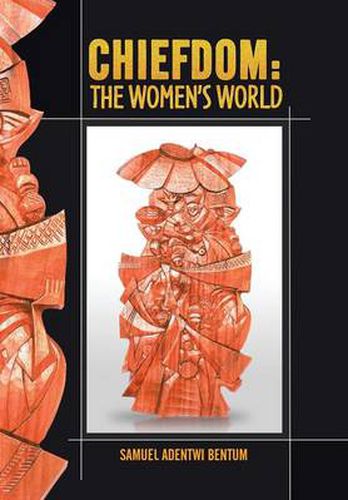Readings Newsletter
Become a Readings Member to make your shopping experience even easier.
Sign in or sign up for free!
You’re not far away from qualifying for FREE standard shipping within Australia
You’ve qualified for FREE standard shipping within Australia
The cart is loading…






This title is printed to order. This book may have been self-published. If so, we cannot guarantee the quality of the content. In the main most books will have gone through the editing process however some may not. We therefore suggest that you be aware of this before ordering this book. If in doubt check either the author or publisher’s details as we are unable to accept any returns unless they are faulty. Please contact us if you have any questions.
Chiefdom: the Women’s World introduces a method of viewing and understanding art. For centuries, artists have relied on nature and tradition as their great sources of inspiration. Irregular wooden boards in their natural state are sculpturing resources that are worthy of adoration and adoption. Nature produces the images of Chiefdom on surfaces of wooden boards and by so doing, establishes the system of chiefdom. The concept upon which these aesthetics and appreciations were figured out was based on the philosophy of truth which presents the materials, their sources and physical appearances as the basis of these sculptures. Therefore, the need to preserve and present the material was as crucial as the institution of chiefdom. The style of presentation of these collections in this book centred on simplified realism that settled on plain geometric forms, shapes and lines. Carving technique was at times interspersed with the jagged shape of the wood boards, tree bark textures, surface perforations and marks from band and circular saws used in milling the timber into wooden boards. Titles of these relief sculptures were derived from the culture of Akan-Fante chiefdom and translated into English. The females in these compositions are hyped to all the natural status of chiefdom even though some of the positions are the preserve of males. Hence, the dignity of the African culture in relation to Chiefdom is clearly and solidly sourced from the form and imagery produced from naturally shaped wood boards. SAMUEL ADENTWI BENTUM (Ph.D)
$9.00 standard shipping within Australia
FREE standard shipping within Australia for orders over $100.00
Express & International shipping calculated at checkout
This title is printed to order. This book may have been self-published. If so, we cannot guarantee the quality of the content. In the main most books will have gone through the editing process however some may not. We therefore suggest that you be aware of this before ordering this book. If in doubt check either the author or publisher’s details as we are unable to accept any returns unless they are faulty. Please contact us if you have any questions.
Chiefdom: the Women’s World introduces a method of viewing and understanding art. For centuries, artists have relied on nature and tradition as their great sources of inspiration. Irregular wooden boards in their natural state are sculpturing resources that are worthy of adoration and adoption. Nature produces the images of Chiefdom on surfaces of wooden boards and by so doing, establishes the system of chiefdom. The concept upon which these aesthetics and appreciations were figured out was based on the philosophy of truth which presents the materials, their sources and physical appearances as the basis of these sculptures. Therefore, the need to preserve and present the material was as crucial as the institution of chiefdom. The style of presentation of these collections in this book centred on simplified realism that settled on plain geometric forms, shapes and lines. Carving technique was at times interspersed with the jagged shape of the wood boards, tree bark textures, surface perforations and marks from band and circular saws used in milling the timber into wooden boards. Titles of these relief sculptures were derived from the culture of Akan-Fante chiefdom and translated into English. The females in these compositions are hyped to all the natural status of chiefdom even though some of the positions are the preserve of males. Hence, the dignity of the African culture in relation to Chiefdom is clearly and solidly sourced from the form and imagery produced from naturally shaped wood boards. SAMUEL ADENTWI BENTUM (Ph.D)